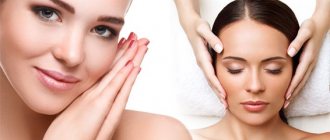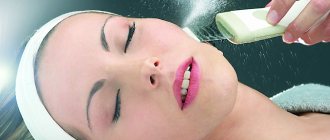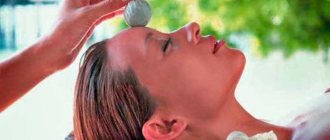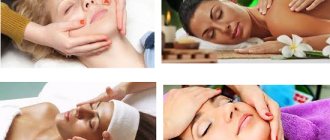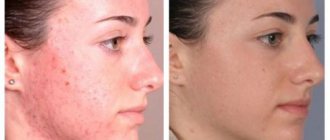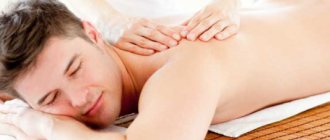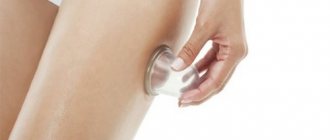Stress, overwork, physical and mental stress - constant companions of a person - often cause health problems. According to statistics, 80% of the world's population develop areas of excessive muscle tension in the body, which lead to a number of problems. Spasms are accompanied by severe pain, disruption of blood flow and metabolic processes in tissues, and limitation of motor functions. Fortunately, there is a good way to achieve complete relaxation of the fibers and eliminate painful symptoms.
This is myofascial massage - the latest therapeutic technique that came from America not long ago and has already become popular all over the world. Let's get to know her better.
Fascia and its functions
The word fascia is translated from Latin as “bandage”, “bandage” or “case”. In anatomy, fascia is a dense connective tissue that literally permeates the body, creating a sheath for muscles, enveloping internal organs, bones and nerve fibers. This is an important element of the structure of tendons, ligaments, and joints.
Considered an auxiliary tissue, fascia nevertheless performs important functions:
- Keeps internal structures, muscles, tendons, blood vessels and nerves in a clearly fixed position.
- Actively participate in metabolism.
- Separate organs from each other, limiting anatomical structures.
- Attach muscles to the bones of the skeleton.
- They control muscle volume and prevent their deformation due to their elasticity and stretchability.
- By contracting, they allow you to hold the body in an awkward position.
- They transmit energy impulses, moving muscles and bones.
- Accelerate the flow of blood and lymphatic fluid.
- They protect blood vessels and nerves passing through the thickness of muscle tissue.
Fascia has memory and is able to change its shape with constant repetition of the same movements.
It has been proven that the elasticity of fascial tissues largely depends on the emotional state of a person: internal clamps, stress and tension make these structures rigid, reduce their flexibility, which leads to poor posture and stiffness of movements.
MYOFASTIAL MASSAGE OF THE FACIAL HOW TO DO IT OFTEN
Massage heals the skin from the inside
Since the procedure has a powerful effect, the question arises of how often to do myofascial facial massage. The absence of cosmetics and oils for massage means that it is suitable for any skin type. At the discretion of the specialist, the procedure can be done approximately 10 times a month. After the session, the muscles relax, all clamps are removed, due to which the oval of the face is corrected, and the skin is saturated with oxygen.
The result is noticeable after the first procedure. For greater effect, it is recommended to undergo at least 8 sessions.
ADVANTAGES AND DISADVANTAGES
Any medical and cosmetic procedure has its pros and cons. Among the negative points, the following can be noted:
- The need to visit a specialist. This type of massage should not be performed at home.
- High cost of the procedure.
- Quite a lot of contraindications.
- There may be pain during the massage.
The advantages include high efficiency, deep study of the fascia, general improvement in well-being and excellent mood. After the session, all muscle tension is removed, facial tone is evened out, contours are tightened, wrinkles disappear, and blood flow improves.
If this is your first time deciding to undergo this procedure, read the reviews about the specialist you plan to contact. The result largely depends on the experience, skills and practice of the massage therapist, as well as on the characteristics of your body. It is best to visit a doctor before the procedure to ensure there are no adverse effects.
Consequences of dysfunction
For various reasons, the structure and functions of the fascia can be disrupted, causing a lot of problems for a person.
Fascial tissue is often called the “sixth sense organ.” After all, free nerve endings, receptors responsible for pain and movement “sensors” are located here. Any disruption of the functioning of the “peripheral brain” can lead to sad results: we will stop coordinating any movement of the body in space and feel pain, which, as is known, is a signal warning of problems with the body.
One way to relieve back pain is to massage your lower back.
The principle of action and results of massage
It is known that fascial tissue is very sensitive and is capable of changing its structure in response to external influences. Therefore, special techniques of deep myofascial massage, during which not the muscles themselves are worked, but the connective tissue membrane surrounding them, will help restore lost functions and relieve a person from pain and discomfort. As a result of this procedure:
The technique of working with fascia allows you to increase the mobility of the spine and joints, corrects the figure, promoting weight loss, relieves inflammatory processes, improves the appearance and condition of the skin. Moreover, this massage directly affects the nervous system, balancing the processes of excitation and inhibition, improving sleep, and improving mood.
It is important to warn the patient that a temporary reaction to exposure may include local redness of the skin, muscle twitching, chills, nausea and increased urination. This is how the body rebuilds itself and reacts to changes caused by the massage therapist’s manipulations.
Fascial massage of different zones
Long-term scientific research has proven that by acting on different areas of fascial tissue, it is possible to eliminate clamps, relieve spasm or muscle tension, relieve pain, even working at some distance from its source, restore or limit the mobility of various structures.
Indications and contraindications for head massage
Since fascial tissue literally permeates our entire body, different areas of it are subject to massage:
Back
The impact on this zone is exclusively health-improving in nature and is carried out in order to:
- develop painful trigger points;
- increase spine mobility;
- eliminate muscle spasms;
- release pinched nerve endings;
- improve blood circulation;
- relieve pain syndrome.
The patient is placed on his stomach to perform myofascial diagnosis. It allows you to determine the state of a person’s musculoskeletal system, the range of motion of the spine and joints, and identify existing and sometimes hidden diseases. Using examination and deep palpation, the massage therapist determines tension zones and trigger points, thus outlining an individual plan of action.
A session of myofascial massage begins with the cervical-collar area, then moves to the shoulders, goes down along the paravertebral lines and ends with working on the lower back and sacral part of the back. At the same time, classical techniques - stroking, rubbing, kneading - are combined with the myofascial technique of the “three Ts”: “tension” (pressure), “torsion” (twisting), “traction” (stretching). The treatment is carried out along the fibers, matching the deep impact with the patient’s breathing.
Legs
The legs and thighs are massaged to relieve tension, muscle pain, and increase endurance. The procedure is often used by athletes who experience physical strain on a daily basis.
Here, the stretching technique is most often used, which allows you to relax the fascia, restore their elasticity, and thoroughly work out the muscles. Massage slowly, in the direction of the fibers. With one hand they lightly fix the skin, with the other they move the fascia until a strong resistance is felt. Repeat the procedure until complete tissue relaxation occurs.
The so-called “felting” will help to stretch the compacted fibers of the fascia: the muscles are grabbed, lifted, pulled to the side, and then returned to their original position.
Face and neck
Myofascial work on the neck is primarily aimed at relieving pain that periodically occurs even in a completely healthy person. The method allows you to eliminate problems such as:
- spasms;
- pinched nerve roots;
- short neck syndrome;
- "widow's hump";
- subsidence of the vertebrae;
- ligament weakness;
- swelling;
- age-related degenerative changes.
Massage begins with diagnostics, determining the anatomical features of the muscle structure and tissue attachment points. Then they begin therapy aimed at removing the blocks. The fascia of the lateral surface of the neck is treated simultaneously with the impact on the scalp. Kneading and pressing are carried out with both hands at once.
Myofascial facial massage is used to remove puffiness, improve the color and condition of the skin, tighten the oval, and stop age-related changes. In addition, it helps in restoring facial symmetry after strokes and paresis.
Myofascial work-out involves a deep impact on the structures of the body, so you should get used to the procedure gradually, step by step increasing the duration - from 30 minutes to an hour and a half. To achieve lasting results, it is recommended to visit the massage room 2-3 times a week.
MYOFACIAL MASSAGE OF THE FACIAL TECHNIQUE
It cannot be performed at home, since excellent knowledge of anatomy is required.
The technique of performing myofascial facial massage does not require cosmetics. All that is needed is the hands of a massage therapist, who carefully work out all the clamps on the face.
So that you don’t get scared in the cosmetologist’s office, we suggest you familiarize yourself with the stages of the procedure:
- Makeup is removed from the surface of the face, the skin is cleansed.
- Apply talc or oil.
- The skin of the face is slightly warmed up beforehand.
- The specialist twists the skin under the chin.
- The ears are massaged and the skin around them is twisted.
- In the area of the forehead and cheekbones, the skin stretches.
All actions of the massage therapist are directed to the fascia, which ultimately leads to healing and rejuvenation of the skin.
“Read also: Chemical peeling for the face”
Contraindications
Myofascial therapy can cause global changes in the body, so it needs to be taken seriously. You should avoid the procedure if you suffer from:
- oncology;
- tuberculosis;
- herpes;
- internal bleeding;
- dermatitis;
- pustular rashes;
- fragility of blood vessels;
- osteoporosis;
- blood diseases;
- rosacea.
Open injuries, wounds, burns, the presence of large moles, papillomas, nevi are also contraindications to deep tissue massage. Infectious and inflammatory diseases accompanied by high body temperature, pregnancy, recent childbirth or abortion, increased mental excitability - conditions in which exposure to the fascia can cause harm to a person.
Self-massage
Doctors unanimously say that this massage should only be performed by specialists. After all, without deep knowledge of anatomy and physiology, the ability to “read” and feel the human body with your hands, without practical skills in influencing fascial tissue, you can only harm the patient, aggravating his condition.
The only way out for those who want to do massage on their own is to use special devices. This could be a tennis ball, a spiked roller, or a roller for deep work on muscles and connective tissue.
- To begin with, you should feel your body with your hands, identifying painful or tight areas.
- Warm up the surface using classic rubbing.
- Using light pressure or rolling, work the problem area for 30–60 seconds.
- You need to act very carefully, trying not to cause pain.
You can learn more about self-massage methods from the video tutorial.
It is important to remember that this method is intended to work with muscles and fascia, so exposure to bones, joints and the spine is prohibited. Massage of the neck, where the arteries, nerve plexuses and vital organs are located, is also best left to a trained master.
How much does the procedure cost?
There is no standard script for the myofascial massage procedure. Its duration, intensity, and the range of techniques used depend on the characteristics of the body, age, diagnosis of the patient and are selected individually.
These factors also determine the price of the procedure. In salons in Moscow and St. Petersburg it varies from 500 to 4000 rubles per session. Thus, specialists will work on the fascia of the cervical spine for 500 rubles, and the entire back for 4,000 rubles.
Be prepared for the fact that an effective and lasting result will be obtained only after a full course of 7–10 procedures. If the price seems too high to you, wait for promotions or buy a certificate that provides a discount.
Myofascial massage, reviews
Love 33 years old:
After reading positive reviews, I decided to take a course of myofascial facial massage. I am not a young woman and the skin on my face requires good care. I went to the salon on the recommendations of my friends and signed up for 10 massage sessions and alginate masks; in general, I liked the procedure. And so after the procedure there is a feeling of tone, the skin looks healthier, the skin is tightened and facial fatigue is gone. The next day this feeling passed, and I began to look forward to the next session. I can say that the procedure gives a certain result, but 10 sessions are not enough, you need to do such massages more often!
“Read also: How to tighten the skin on your neck”
Author's methods
Myofascial technique is relatively young, but it already has a lot of supporters. Some of them follow classical principles, others bring their own ideas, wanting to improve the technique and achieve better results. I would especially like to note the author’s methods:
- Enrique Garcia - his Spanish or chiromassage technique is aimed at removing clamps and blocks of muscle tissue by influencing the fascia. The result is facial rejuvenation, improved functioning of joints and blood vessels, correction of neurophysiological and metabolic processes occurring in the human body. You can read more about the benefits and rules for using the technique in the article: “Spanish facial massage.”
- Tatiana Shubina - the technique is aimed not only at facial rejuvenation and combating age-related changes (which undoubtedly attracts women), but also at significantly improving the patient’s well-being, combating migraines and dizziness. Cosmetologist and massage therapist Tatyana Shubina sees the reason for their appearance in muscle tension, which can be eliminated by massaging the fascia of the tendon helmet of the head, face, neck and ears.
Any of these techniques is not only therapeutic, but also an excellent preventive measure. Don’t wait for health problems to appear - start the procedures today and feel free to plan an active life full of strength and energy for decades to come.
Impact technique
Preparation for fascial massage involves cleansing the skin of impurities and cosmetics, otherwise oxygen will not be able to pass through clogged pores and the effect of therapy will be less. And only after this they begin the procedure itself, gradually working on the head area, neck and face.
Head
This includes massage of the tendon helmet, temporal fascia and areas around the ears. The procedure is slightly different from the classical method:
- With both hands, perform intense clockwise movements in the scalp.
- Having laid the patient on his side, place his hand so that the thumb is in front of the auricle, and the rest are in the hairy area. Knead the skin, alternating intense circular kneading with light stroking.
- Having placed the middle and index fingers on the forehead, and the thumb at the temple, with some effort they move them towards each other, and then spread them apart.
In the article: “Head massage” we already talked about the anatomical structure of different areas of the head. By influencing the fascia of the cranium, it is possible to relieve tension in the scalp area, which automatically leads to relaxation of the muscles of the forehead area, smoothing out facial transverse and longitudinal wrinkles. And working on the parotid fascia allows you to get rid of age-related tissue changes in a short time and helps improve hearing.
Neck
The fascia of this zone is numerous. They form sheaths and sheaths for muscles, act as a fastening element connecting muscle tissue with the processes of the vertebrae and the base of the skull, and when fused, they form the linea alba of the neck.
These connective tissue structures are affected by techniques that include circular rubbing, displacement, and rolling. Massage of the lateral and back surfaces of the head is carried out in parallel with the treatment of the scalp, and the chin area is moved only after relaxation of the frontotemporal zone. Read about the benefits of this procedure in the article: “How to properly massage the neck.”
You need to massage the neck carefully: the largest main arteries, nerve bundles and important organs are located here, injury to which can be life-threatening.
Face
If, of the many rejuvenating massage techniques known today, described on the page: “Various types of facial massage,” you have chosen myofascial for yourself, be prepared for the fact that the master:
- She will offer to cleanse the face of impurities, dead skin scales and cosmetics.
- Perform palpation diagnostics, assessing the condition of the muscles, identifying spasmodic and tense areas.
- Massage will begin from the chin area, slowly moving from the midline to the ears, trying not to stretch the skin.
- Use your fingers clockwise to rub the points located under the corners of your lips.
- From them towards the cheekbones and back he will perform rolls and then pinches.
- By pressing soft tissues to the base of the skull, every expression wrinkle will be worked out.
- Deep pressing movements will go from the bridge of the nose to the temples.
All these techniques form a single system, smoothly replacing each other. You can understand how a professional does this by watching a video tutorial. The massage course consists of 6 sessions, which are performed 2 times a week.
